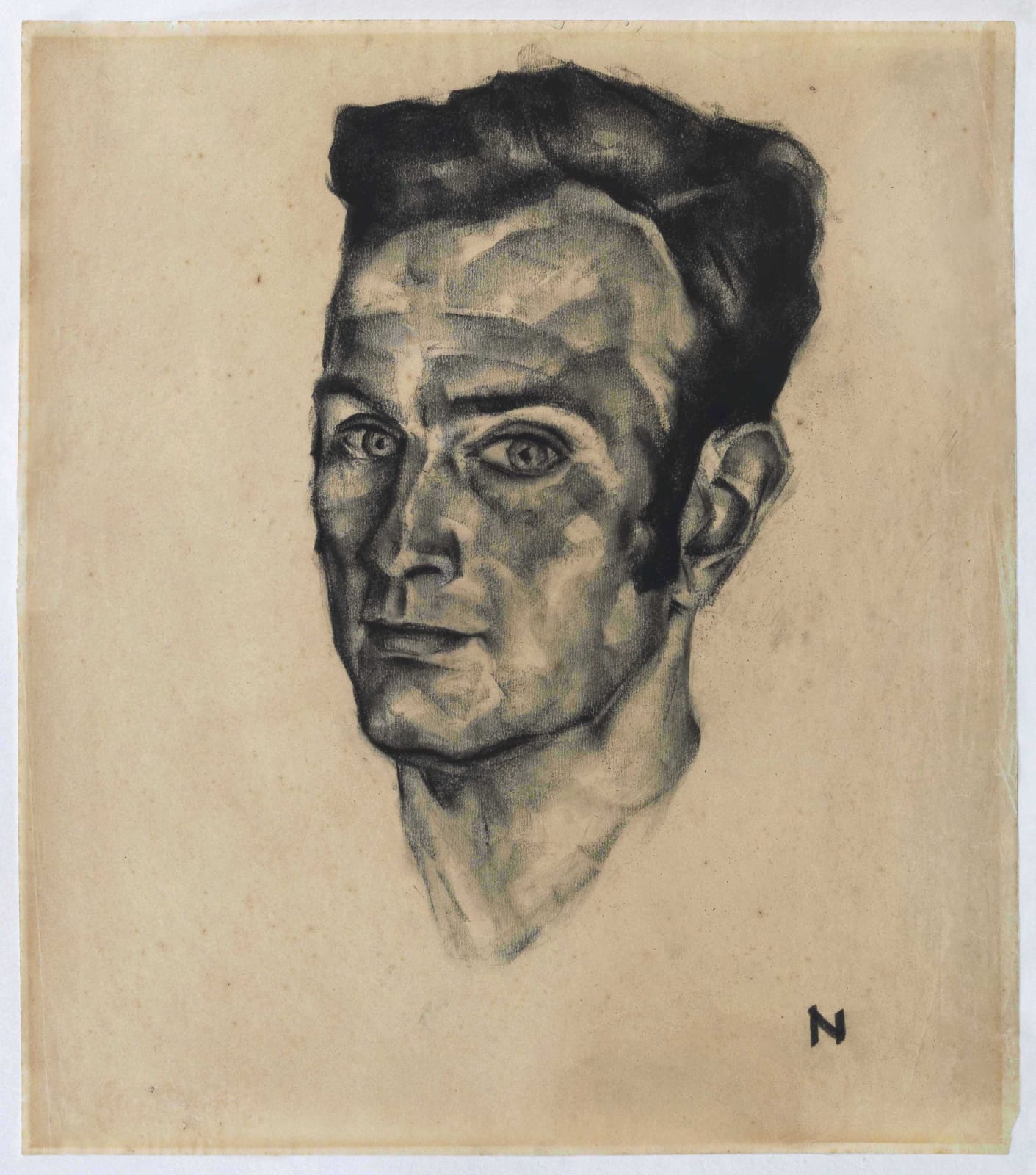
Ernst NEPO
SOLD
Literature
Ernst Nepo 1895-1971, exhibition catalogue, Tiroler Kunstpavillon, Innsbruck 9 February – 4 March, Innsbruck 1973;
Ernst Nepo 1895-1971, ed. Gert Ammann, exhibition catalogue, 11 December 1981 – 14 February 1982, Tiroler Landesmuseum Ferdinandeum Innsbruck, 1982;
Inge Praxmarer, Ernst Nepo 1895-1971, Innsbruck 1993;
Neue Sachlichkeit: Österreich 1918-1938, ed. Klaus Albrecht Schröder, Vienna 1 April – 2 July 1995, Kunstforum Bank Austria, Vienna 1995;
Wenn es um die Freiheit geht: Austria 1918-1938 Österreichische Malerei und Graphik der Zwischenkriegszeit/ Quando è in gioco la libertà: immagini fra le due guerre in Austria, ed. Christoph Bertsch, Vienna 2000;
Silvia Höller, Ernst Nepo. Zwischen Expression und Sachlichkeit, exhibition catalogue, RLB Kunstbrücke, Innsbruck 23 January – 11 April 2001, Waltherhaus, Bolzano 19 April – 4 May Vienna 2001;
Blickwechsel. Landschaft zwischen Bedrohung & Idylle, exhibition catalogue ed. Wolfgang Meighörner, 1 June – 28 October 2012, Tiroler Landesmuseum Ferdinandeum Innsbruck, Vienna 2012.
The drawing presented here is a portrait of the Ernst Nepo’s close friend, the painter Alphons Schnegg (1895 – 1932). It was with Schnegg, and with Rudolf Lehnert and Herbert Gurschner, that Nepo ran the so-called Mühlauer circle in Mühlau near Innsbruck. From the probable age of the young artist, who died at the age of only 37 in 1932, we may surmise that the portrait was drawn some time between 1917, the year in which young Ernst held his first one-man show in Innsbruck (at the Kunsthandlung Czichna), and 1920 when he changed his family name from Nepomucky to Nepo.
The sitter is meticulously explored, his features firmly identified by the artist with a thin, soft, yet at the same time incisive black stroke unhesitatingly drawn with the tip of a charcoal pencil. The chiaroscuro of the face, on other hand, is rendered in broad strokes applied holding the pencil flat in such a way as to create an interplay of sheaves of shadow intersecting with each other to create the sitter’s soft complexion and the unique dynamic that permeates this drawing.
This method, which the artist devised to adapt his work to his own “painterly” urgency, is magnificently expressed in his Self-Portrait With My Wife dated 1921, in which the chiaroscuro of the face is accomplished with broad brushstrokes of complementary colours set one alongside the other.
This characteristic manner of drawing allows us to liken the portrait to other work of the same period, in which we can still detect traces of the artist’s initial interest in Cubism and subsequently in the Expressionism of Egon Schiele. Yet we can also make out, with equal clarity, the direction in which his work was shortly to head, when he began to focus on a desire to combine a correct rendering of his sitter’s anatomy with sharp psychological observation, a trait that soon made him one of the leading exponents of the Neue Sachlichkeit (New Objectivity) in Tyrol.
The doggedly introspective nature of Nepo’s work at this time stands out clearly in a series of paintings in which the sitter’s eyes form the pivotal moment of a portrait, for example the Self-Portrait with My Wife mentioned above, but also the Knabe mit blauer Blume (Boy with a Blue Flower) dated 1922, and above all his famous and slightly later Familienporträt Keller (Portrait of the Keller Family) painted in 1929 and now in the Tiroler Landesmuseum Fernandeum.
As in those works, so too in this drawing we are struck by the emphasis that Nepo assigns to his sitter’s expressive eyes, causing them to make instant contact with the observer. If it is true that our gaze frequently conceals or reveals our true feelings, then the gaze of the young Alfons Schnegg mirrors his soul, triggering in us a feeling of turmoil and of the magical suspension of reality typical of the artistic trend that was to become known in Italy as Magical Realism, which ends up prompting us to wonder whether we are looking at the sitter or whether it is not, rather, the sitter who is looking at us.
A brief biography
Ernst Nepomucky trained at the Kunstgewerberschule in Teplitz-Schönau and at the Kunstgewerberschule in Vienna from 1909 to 1913. He enlisted as a volunteer at the outbreak of World War I and served in the Tiroler Kaiserjäger Regiment in Galicia. He held his first one-man show at the Kunsthandlung Czichna in Innsbruck in 1917. At the end of the war he settled in Mühlau (Innsbruck), where he ran the so-called Mühlauer circle with Alfons Schnegg, Rudolf Lehnert and Herbert Gurschner. He changed his surname to Nepo in c. 1920, and in 1925 he co-founded the Die Waage group with Schnegg, Rudolf Lehnert, Wilhelm Nicolaus Prachensky, Leo Sebastian Humer and others.
His first major success came in 1927 when he was awarded the “Staatsmedaille”, a government honorific, for his Portrait of Mrs. Ostheimer , and was admitted to the Sezession in Vienna.
He also worked as a stage and set designer for the Stadttheater and the Exelbühne in Innsbruck from 1933 to 1937, and held the post of Regional Director of the Tyrol Reichskammer der bildenen Künste from 1938 to 1939 and from 1941 to 1943. His fine work currently graces a number of churches in Tyrol. His prolific participation in exhibitions was broken off during World War II but resumed in the 1950s, and he went on to win the Vienna Künstlerhaus’s gold prize in 1965.
Join the mailing list
Subscribe to our newsletter to receive all the news about exhibitions, fairs and new acquisitions!